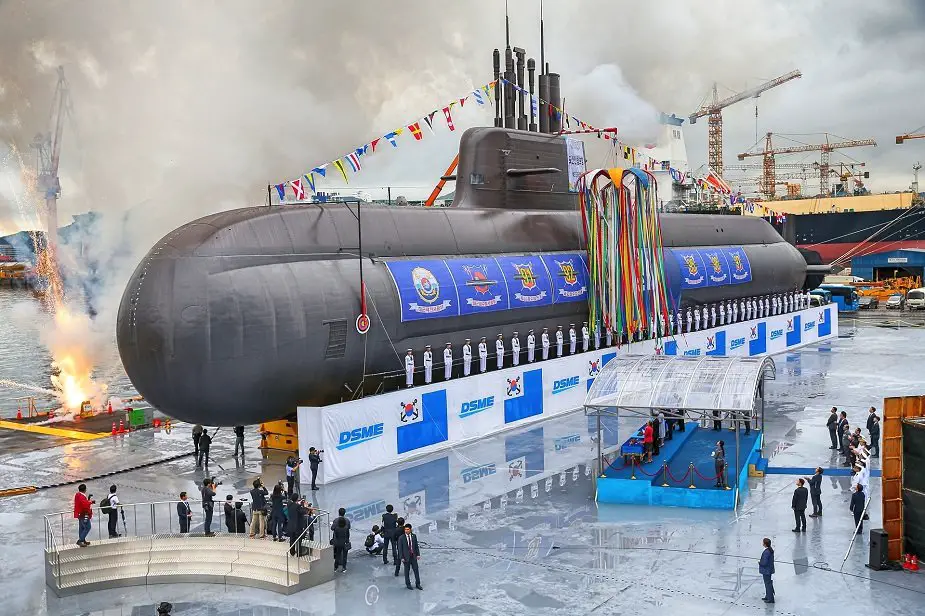Breaking news
Indra to equip Republic of Korea Navy's KSS III submarine with Pegaso system.
According to a press release published by Indra on November 25, 2021, the firm has entered into a contract with the Korean DSME shipyard to equip the first KSS III submarine of Batch II to be delivered to the Korean Navy with its Pegaso electronic defence system, which offers a probability of interception of signals in its working band close to 100%.
Follow Navy Recognition on Google News at this link
 First KSS III submarine Dosan An Chang-Ho (Picture source: DMSE)
First KSS III submarine Dosan An Chang-Ho (Picture source: DMSE)
Indra’s system monitors the electromagnetic signals emitted in its environment to gather intelligence (SIGINT), combining the functions of the radar and communications signals measurement support system (RESM/CESM).
The solution integrates both sensors into a single antenna to increase efficiency, save space and reduce the radar section of the submarine, making it more difficult for the enemy to detect it.
It also incorporates True Wideband Digital Reception, which instantly covers a wide spectrum of the radar and communications bands to increase the likelihood of the interception of any vessel or aircraft in the submarine’s vicinity to almost 100%.
In addition to gathering high-value intelligence for the entire fleet, Indra’sPegaso system will effectively contribute to the Electronic Order of Battle (EOB) in the area of operations in real time.
The company will address the integration of its Pegaso system into the combat system (CMS) developed by Hanwha Systems, the local Korean company. It will also work with the DSME shipyard to support the Korean Navy in defining the doctrine for the use of electronic defence systems on submarine platforms, particularly in the field of communications signals intelligence in areas of conflict.
Indra has been awarded this contract after equipping three KSS III submarines from the first batch of this program.
The new setting of the Pegaso system to be implemented now will be more sophisticated, enhancing the capabilities of the upgraded version of the KSS III, an almost 90-meter long state-of-the-art submarine that is capable of displacing over 4,000 tonnes submerged.
The Pegaso system is capable of the automatic and instantaneous detection of emissions (including accurate information on their angle of arrival), analysis, classification, identification and the recording of pulsed or continuous wave signals on the radar and communications frequency bands.
It can also record any signals, data and events that occur on the mission for subsequent offline analysis, using specific software tools for detailed study.
The Dosan An Changho diesel-electric submarine, named after the Korean independence fighter, is the lead in a series of non-nuclear submarines of the KSS-III project, completely developed by South Korean specialists.
The beginning of the development of submarines of this project started in the early 2010s. The submarine was laid down in May 2016, launched in September 2018, and sea trials began in 2019.

























